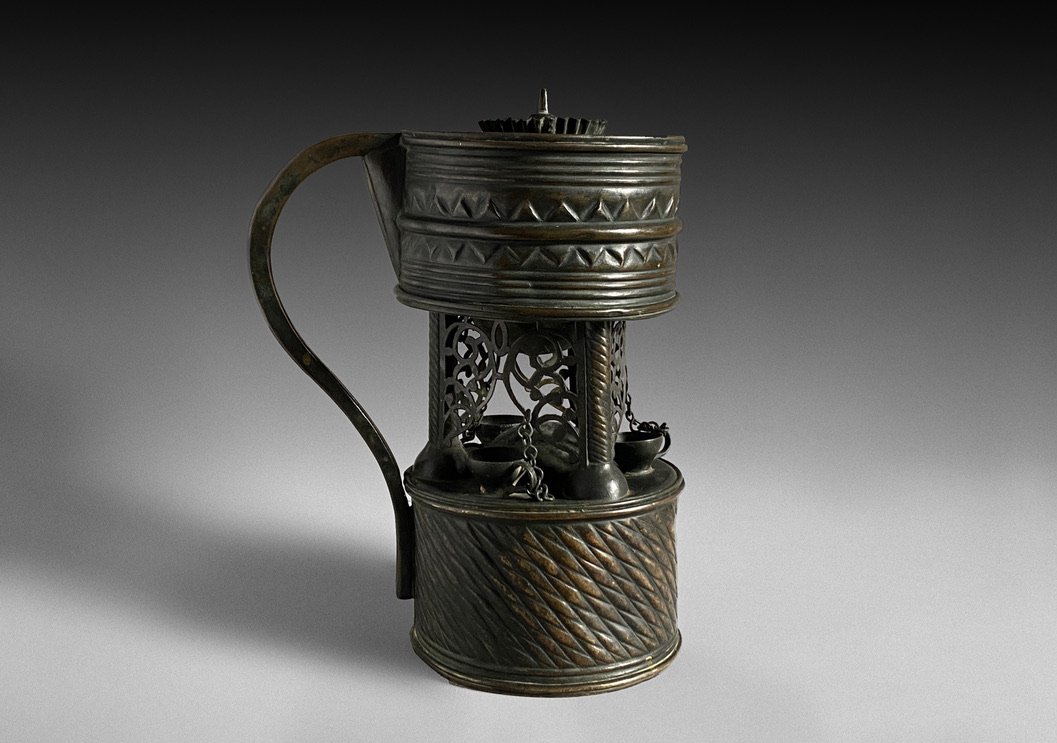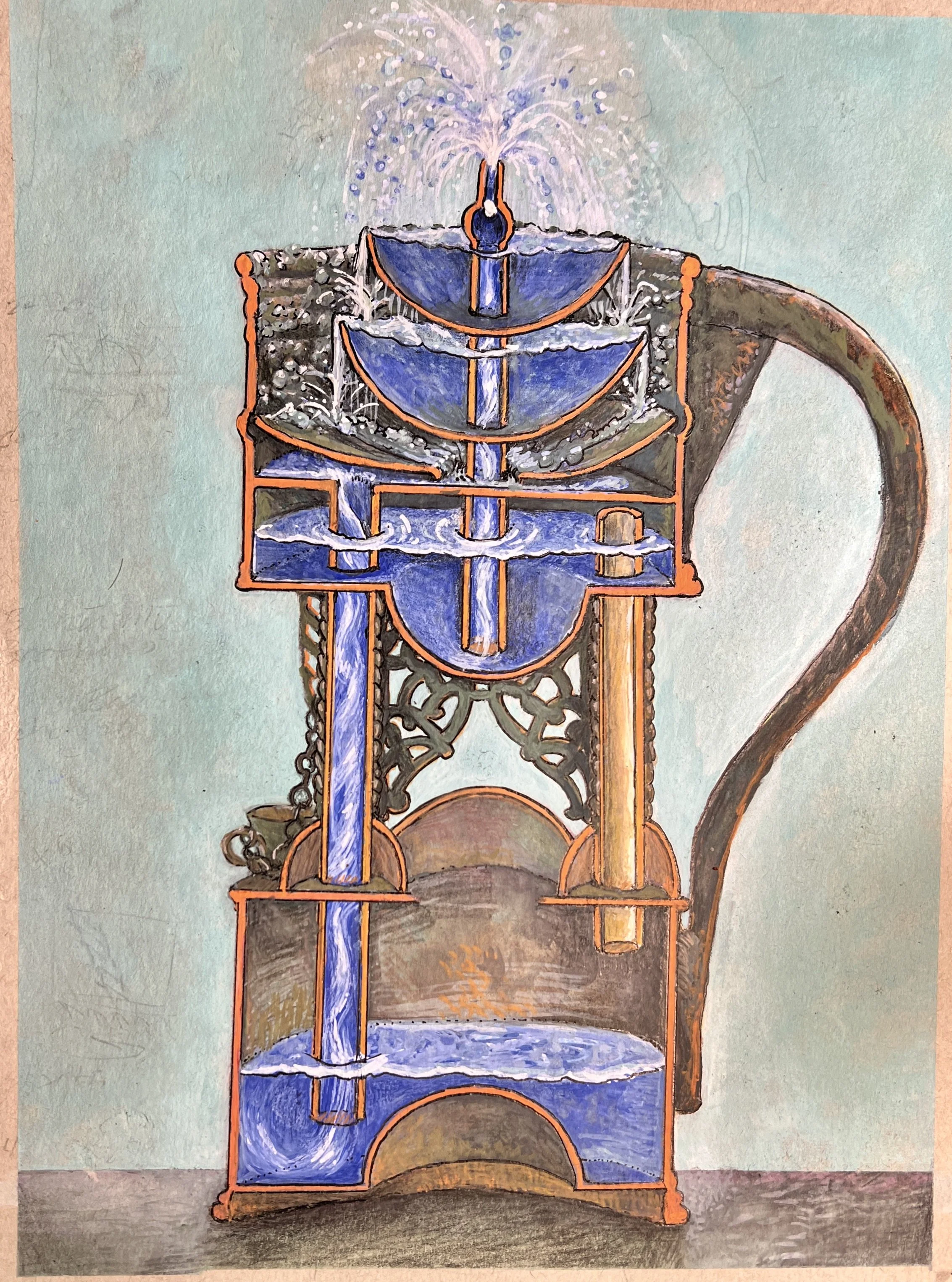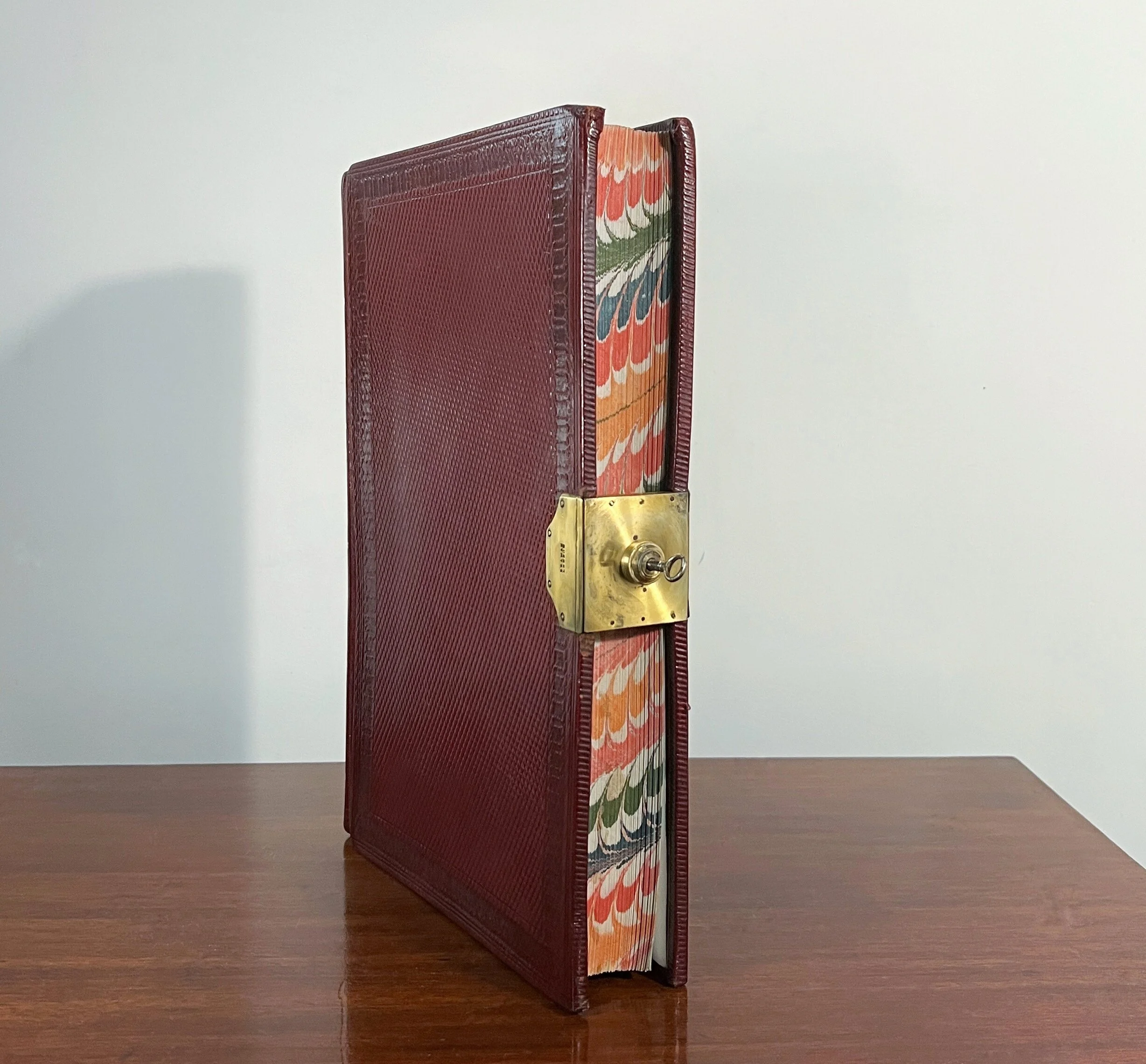Copper Alloy Pneumatic Table Fountain in the manner of al-Jazari & Heron of Alexandria. Turkey, Pre 19th c.
Copper Alloy Pneumatic Table Fountain in the manner of al-Jazari & Heron of Alexandria. Turkey, Pre 19th c.
This highly unusual and rare, possibly unique, pneumatic table fountain takes the form of a sabil or shadirvan (public drinking fountains and ablution fountains) found at cross roads, on building facades and within Mosques. Here pipes are concealed in the upper and lower tanks that move water via air pressure and gravity to automatically raise and spray water from the top fluted basin. The use of miniaturized architecture, with a long tradition in Islamic culture, added to the entertaining and delightful effects of this marvel. The fountain may have had a role in celebrations, using perfumed waters.
The craftsperson who made this object was clearly influenced by, and most certainly had access to, copies of some important texts such as: Heron of Alexandria’s “Pneumatica”, c. 50 CE., the The Banū Mūsā brothers, “Book of Ingenious Devices”, 850 CE., and Ismail al-Jazari “Book of the Knowledge of Ingenious Mechanical Devices”, 1206 CE., amongst other works by polymaths from antiquity through the medieval period emerging within the Islamic world.
The assembled metal parts are made of tinned-copper alloy sheet with lead soldered seams, traces of gold gilding and appear to conform to the step-by-step instructions for fabricating similar devices described within al-Jazari “Book of the Knowledge of Ingenious Mechanical Devices”.
This object bears many stylistic affinities to Islamic sabil (drinking fountains) and shadirvan (ablution fountains) erected during the Ottoman Empire from 16th century onward. There may be further links to the city of Diyarbakır, where al-Jazari worked at the Artuqid court of Nasir al-Din Mahmud at the Artuklu Palace in the 13th century. The architectural vernacular of this city has design elements seen on this object.
*Contemporary (21st C.) drawing of the presumed cross section interior based on comparative analysis of Heron and al-Jazari’s manuscripts.





